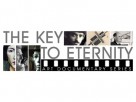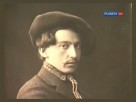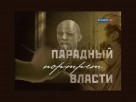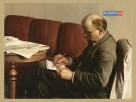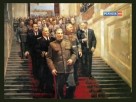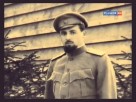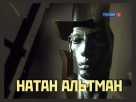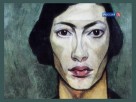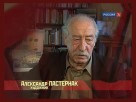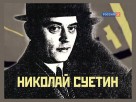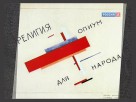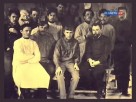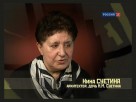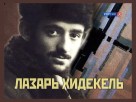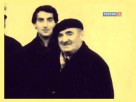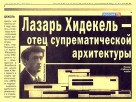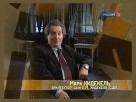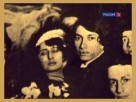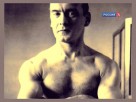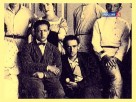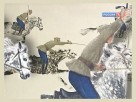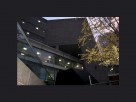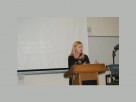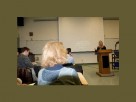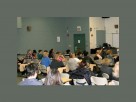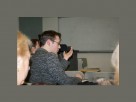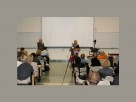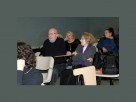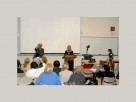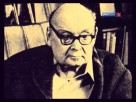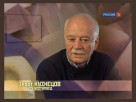The Key to Eternity
Event Venue:
See detailsEvent Date:
November 16, 2012 to March 14, 2013The Key to Eternity & Fate of Artists in Soviet Russia:
Screening and Discussion of Art Documentaries
Friday, November 16, 5:40 - 8:40 PM - Screening I. | Hunter College, Auditorium 510 Hunter North
Friday, November 23, 6:00 - 8:00 PM - Screening II. | Hunter College, Auditorium 510 Hunter North
Monday, November 26, 6:00 - 8:30 PM - Screening III. | The Harriman Institute of Columbia University, 420 West 118th Street, 12 floor, New York, NY
Monday, December 12, 2012, 6:00 PM - Screening IV. | The Harriman Institute of Columbia University, 420 West 118th Street, 12 floor, New York, NY
Tuesday, March 12, 2013, 6:00 PM - Screening V. | The Harriman Institute of Columbia University, 420 West 118th Street, 12 floor, New York, NY
Thursday, March 14, 2013, 7:00 PM - Screening VI. | Bookstore No.21 | 174-176 Fifth Ave, 2nd floor (22 &23 Str.), New York, NY
This cultural and educational program includes screenings of three art documentary series: Icon, the Key to Eternity, The Formal Portrait of Power and The Taming of Talent, each consisting of four films.
Series 1. The Icon, the Key to Eternity
Series 2. The Official Portrait of Power: Alfred Eberling, Isaac Brodsky, Dmitry Nalbandian
Series 3. The Taming of Talent: Nathan Altman, Lazar Khidekel
Alexander Borovsky, Svetlana Domogatskaya, Irina Karasik, Natalia Kozyreva, Regina Khidekel, Lyudmila Martz and Natalia Semenova are among art historians and museum directors interviewed in these films.
The Icon, the Key to Eternity (Russia, 2011, language: Russian) - Byzantine Teacher, Golden Age, Window to Europe and Return of the Icon (Russia, 2010), written and directed by Anton Alekseev. Directors of Photography: Dmitri Igoshin, Anton Vasiliev, Alexander Filippov, Producer Natalie Rodomanova.
The program illuminates the key aspects of Russian icon and its history in the context of world culture, referring to the Byzantine icon painting and the Middle Eastern tradition. The creators of the series also offer a look at the icon as a sacred object, a component of the liturgical space.
The Formal Portrait of Power (Russia, 2011, language: Russian with English subtitles). Directed by Elena Plugatireva, Script by Olga Radvilovich, Director of Photography Alexander Dobriyanik, Composer Vladislav Panchenko, Producer Natalie Rodomanova.
This documentary series tells about the artists who became "court painters" by virtue of the circumstances. Images of the rulers in all times attracted the artists. Russian emperors and empresses were discharging portrait painters from abroad or inviting the best Russian artists. With the advent of Soviet power, the Bolsheviks, too, needed the formal portraits and the devotees authors. Who were these people and what was their motivation? How have the canons of the Soviet court portraits been changed and were, in fact, the Soviet leaders similar to the images that were created by "court artists"?
Featured artists: Nikoly Andreev, Isaak Brodsky, Alfred Eberling and Dmitri Nalbandian.
The Taming of Talent (Russia, 2011, language: Russian with English subtitles). Directed by Elena Plugatireva, Script by Olga Radvilovich, Director of Photography Alexander Dobriyanik, Producer Natalie Rodomanova.
A series includes four documentary films about the Russian avant-garde artists: Nathan Altman (1889 - 1970), Vladimir Lebedev (1891 - 1967), Lazar Khidekel (1904-1986), and Nikoly Suetin (1897 – 1954,) united by the theme: artists and their time.
The films emphasize the importance of these artists' contribution to the Avant-garde development of the late 1910s to early 1930's when the Russian Avant-Garde movement was interrupted midstream and forced underground. After the 1917 October Revolution it was a time of a strange romance between young Soviet power and the Russian avant-garde. These artists enthusiastically created new art for the new country, not noticing that the country itself did not need innovators, rebels and dreamers.
Unlike some of the Avant-garde artists such Marc Chagall and Vassily Kandinsky, the heroes of this series did not emigrate from the Soviet Union, they also have not been touched directly by the arrests and repressions, but their mature years were spent under the shadow of the State control of artistic production.
They lived long lives, mostly in their native Leningrad (now St. Petersburg), continuing to create and develop the avant-garde traditions, but this art was banned from public display and critical discourse through decades.
Today, by rediscovering the legacy of these artists, one can learn more about the historic and political complexity of the relationship between the artist and time he lived through.
The screenings would be accompanied by Q&A sessions and lectures of art historians & experts in the art of the period as well.
I chose the series for its unique blend of art history and political science, which I found highly appropriate to include in my course taught in the Fall 2012. The course was titled "Soviet and post-Soviet Cinema," and one of its thematic units, during which the series was shown, was titled "The Fate of Artists in Russia."
The documentaries were drawn from the series "The Official Portrait of Power" and from the "Taming the Talent" series. Open to other Hunter students and general public, the screening drew a record number of viewers, many of whom were students and faculty. The high level of on-screen discussions, the nuanced approach in tackling highly sophisticated problem of interaction between Russian artists and the Soviet power figures provided fascinating insights into the nature of Soviet system. My students found this part of the course especially revealing as to the nature of the Soviet system in its ability to both control those artists who didn't fit into the official dogma of Socialist Realism and to utilize to full extent the arts ability to serve the system as a means of visual propaganda.
As the exams in the form of essay writing has shown, prompted to respond to the Russian Art Documentary series, my students expressed their fascination with the films and, in their responses, showed that the discussion conducted in-class with Dr. Regina Khidelkel and myself helped students to sort out the complicated correlation between Soviet artists and Soviet power.
Emil Draitser (Дрейцер), Ph.D.
Professor of Russian | Russian Studies
Department of Classical and Oriental Studies
Hunter College of the City University of New York
Event Sponsors:
Russkiy Mir Foundation